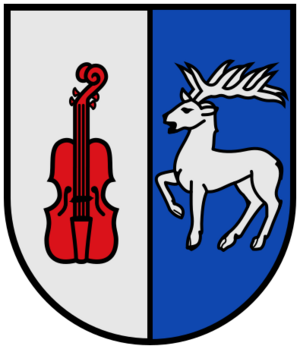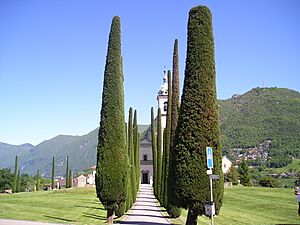Gentilino facts for kids
Gentilino is a lovely village in Switzerland. It's located in the Ticino region, which is near Lake Lugano and the city of Lugano. Gentilino used to be its own town, but in 2004, it joined with two other nearby towns, Agra and Montagnola, to form a new, bigger town called Collina d'Oro.
One of the most special places in Gentilino is the Church of Sant'Abbondio. This church is super old, dating all the way back to the 11th century! Its cemetery is also famous because some well-known people are buried there, including the writer Hermann Hesse. The church and its grounds are considered a very important Swiss heritage site.
A Look at Gentilino's Past
Gentilino was first written about in the year 1210. Back then, it was called Gentarino.
A long, long time ago, during the Early Middle Ages (which was around 800 AD), Gentilino was part of a royal area called Agnuzzo. An emperor named Louis the Pious gave this land to the church leaders in a city called Como. Later, in the 11th century, Gentilino became part of a monastery (a place where monks live) also named S. Abbondio in Como.
Around the 1300s, several villages, including Gentilino, joined together to form a group called the Concilium Sancti Abundii. This helped them manage their lands.
The Church of S. Abbondio is believed to have been an important center for the area even before it was first mentioned in writing in 1140. The church you see today was made bigger in the 1600s.
For many centuries, most people in Gentilino worked in farming. Some people also left the village to work as builders in other places. More recently, Gentilino has become a place where people live and then travel to work in the bigger city of Lugano.
Where is Gentilino?
Before it joined with other towns, Gentilino covered the northern part of the Collina d'Oro valley. It also included a small settlement called Viglio.
Today, there is a pre-school located right in Gentilino, which is great for young children in the area.
How Many People Lived Here?
Here's a look at how the number of people living in Gentilino has changed over time:




